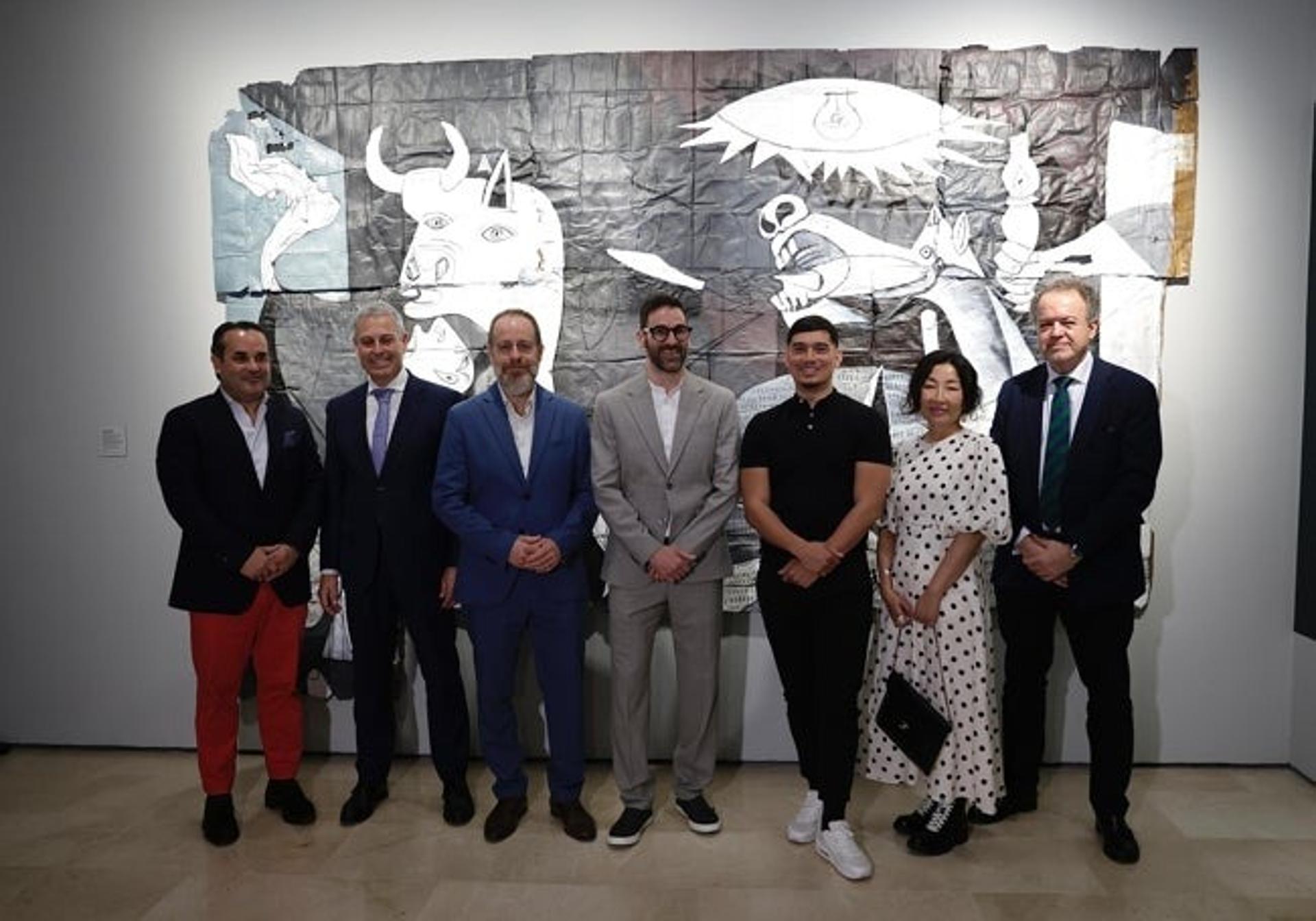

Sections
Highlight

Regina Sotorrío
Thursday, 17 April 2025, 12:09
What at first seemed a problem has become the biggest strength of the latest exhibition at Picasso's birth house, the Casa Natal, in Malaga. This was the ideal place to display Julio Anaya's version of the famous Guernica, painted on cardboard found in the street. However, it didn't fit. The work was too big for the gallery in Plaza de la Merced, made up of several rooms with little space for pieces as large as Anaya's Guernica. There was only one way to do it: taking advantage of exactly what makes Anaya's work unique, its 18 cardboard boxes were divided up as if they were puzzle pieces. The torn up Guernica will be displayed in the Museo Casa Natal in Plaza de la Merced until 28 September. A daring deconstruction which, actually, reinforces the work's symbolism.
"It allows us to investigate and analyse it in sections, instead of getting overwhelmed by the entire piece," said Anaya, who is originally from Malaga.
Despite his international renown, Anaya confessed how impacted he is by being in this space.
"You have to understand that I was a student of Fine Art, I've come here hundreds of times and dreamed of being here. It's baffling to see my work here, I still don't believe it," he said. He doesn't like being in the spotlight and prefers his work to speak for itself.
"Julio presents you with his work and then disappears, so we can start talking about Picasso," said Carles Ferrer, exhibition commissioner. The exhibition relies on the support of Fundación la Caixa and the agreement of Javier Romero, a Malaga businessman who bought Anaya's Guernica after it was first exhibited in Tokyo.
The exhibition starts with a phrase that Picasso said to Eugenio Arias: "People believe that Guernica was painted with brushes. But it wasn't, it was painted with the heart." This quote is the starting point of the gallery where the fragments of Guernica alternate with Picasso's own work and others by Anaya. The pieces work together to contextualise the iconography and the moment in which Guernica became the most famous piece in the history of modern art. The visitors are met with the bull and the horse, the biggest fragment in the exhibition.
-kuH--1200x841@Diario%20Sur.jpg)
-kuH--1200x851@Diario%20Sur.jpg)
-kuH--711x841@Diario%20Sur.jpg)
"Picasso's mother tongue is bullfighting, his way of expressing a universal pain came naturally to him," Ferrer explained. On one side, there's a head of a horse on cardboard. On the other, a few of Picasso's prints inspired by The Unknown Masterpiece by Balzac. Picasso was so obsessed with Balzac that he went to where Balzac set his tale and painted Guernica there.
For this exhibition, La Casa Natal recovered Picasso prints from the collection Sueño y Mentira de Franco (The Dream and Lie of Franco), where the artist included many of the motifs that would eventually appear in the final piece. For example, the harrowing scene of the woman who leaves a building in tears is reproduced by Anaya next to the original. It's been hung up in the most narrow part of the room, to amplify "the claustrophobic feeling" of someone escaping their bombed home.
In other sections we can see the depressed woman fleeing, the woman's head bringing the light and the sculpture of the scattered warrior in pieces on the ground. This last one also appeared in Sueño y Mentira de Franco and correlates to the title of the exhibition Guernica Despedazado (Guernica Torn to Pieces). Picasso donated the sketches from this file to victims of the war - accompanied by a poem recited by Rafael Inglada.

Guernica Despedazado finishes with a series of trompe-l'œil pieces in Anaya's signature style, some made specifically for this project. Anaya remade: Woman Inspired in the Civil War (Portrait of the Marchioness); The Minataur Fight; Swimmers, Sirens, Minotaur and Woman Drowned; and Body of Minotaur Dressed as Harleyquin. All of these are on cardboard boxes from bins or wastelands with holes and imperfections on display.
"The texture of the cardboard is much better than canvas for me," said Anaya, in the last weeks that he was at ARCO Madrid and Art Basel Hong Kong among other international exhibitions.
For Luis Lafuente, director of the agency that manages the Picasso Casa Natal and other museum staff, the project "invites us to see beyond the surface, it offers the opportunity to reflect on details or nuances that otherwise could have been imperceptible".
His predecessor, José María Luna, now director of culture of the Fundación Unicaja, was mentioned on various occasions as architect of the project. He mediated the sale of the piece to Javier Romero, president of Chinalink ESG (second shareholder of Hygreen Energy), and he had the idea of displaying it in this format in the universal genius's home.
Publicidad
Publicidad
Publicidad
Publicidad
Esta funcionalidad es exclusiva para registrados.
Reporta un error en esta noticia

Debido a un error no hemos podido dar de alta tu suscripción.
Por favor, ponte en contacto con Atención al Cliente.

¡Bienvenido a SURINENGLISH!

Tu suscripción con Google se ha realizado correctamente, pero ya tenías otra suscripción activa en SURINENGLISH.
Déjanos tus datos y nos pondremos en contacto contigo para analizar tu caso

¡Tu suscripción con Google se ha realizado correctamente!
La compra se ha asociado al siguiente email
Comentar es una ventaja exclusiva para registrados
¿Ya eres registrado?
Inicia sesiónNecesitas ser suscriptor para poder votar.